Bluestone walkways represent one of the most versatile and enduring choices for outdoor pathways, offering a perfect blend of natural beauty and practical functionality. These stunning stone paths can transform any landscape with their rich color variations ranging from deep blue-gray to subtle greens and browns. Whether connecting garden spaces, leading to entryways, or creating focal points within outdoor areas, bluestone walkways provide both durability and timeless elegance that complements any architectural style.

1. Modern Linear Bluestone Walkway with Steel Edging

This contemporary design features clean, geometric bluestone slabs arranged in perfectly straight lines, creating a sleek pathway that complements modern architecture. The thermal-finished bluestone provides a smooth, uniform surface with subtle texture for safety. Crisp steel edging defines the walkway boundaries while preventing material migration and maintaining sharp, professional lines. The linear arrangement uses consistent spacing between stones, filled with fine gravel or polymeric sand for a refined appearance. Minimal landscaping with architectural plants like ornamental grasses or boxwood hedges flanks the pathway, emphasizing the geometric aesthetic. This design works exceptionally well for contemporary homes, connecting outdoor living spaces with sophisticated simplicity.
2. Curved Natural Cleft Bluestone Path with Native Plantings

A gently meandering pathway using natural cleft bluestone creates an organic, flowing design that feels integrated with the surrounding landscape. The irregular surface texture of natural cleft stone provides excellent slip resistance while showcasing the material's authentic character. Subtle curves guide visitors naturally through garden spaces, creating visual interest and encouraging exploration. Native plantings border the path, including perennial wildflowers, native grasses, and seasonal bloomers that attract beneficial insects and wildlife. The spacing between stones allows for natural moss growth over time, softening the appearance and creating an aged, established look. This design perfectly suits cottage gardens, woodland settings, or naturalistic landscapes where harmony with nature is paramount.
3. Irregular Bluestone Stepping Stones with Moss Accents

This whimsical design uses randomly shaped bluestone pieces arranged as generous stepping stones through garden spaces, creating a playful yet functional pathway. The irregular stones vary in size and shape, mimicking natural rock formations while providing stable footing through planted areas. Intentional gaps between stones encourage moss growth, creating a soft, verdant carpet that complements the stone's cool tones. Low-growing groundcovers like creeping thyme or wild ginger fill spaces between stones, releasing pleasant fragrances when stepped upon. The organic placement follows natural sight lines and garden flow rather than rigid geometric patterns. This approach works beautifully in shade gardens, woodland areas, or informal cottage-style landscapes where a relaxed, naturalistic feel is desired.
4. Formal Geometric Bluestone Walkway with Brick Borders
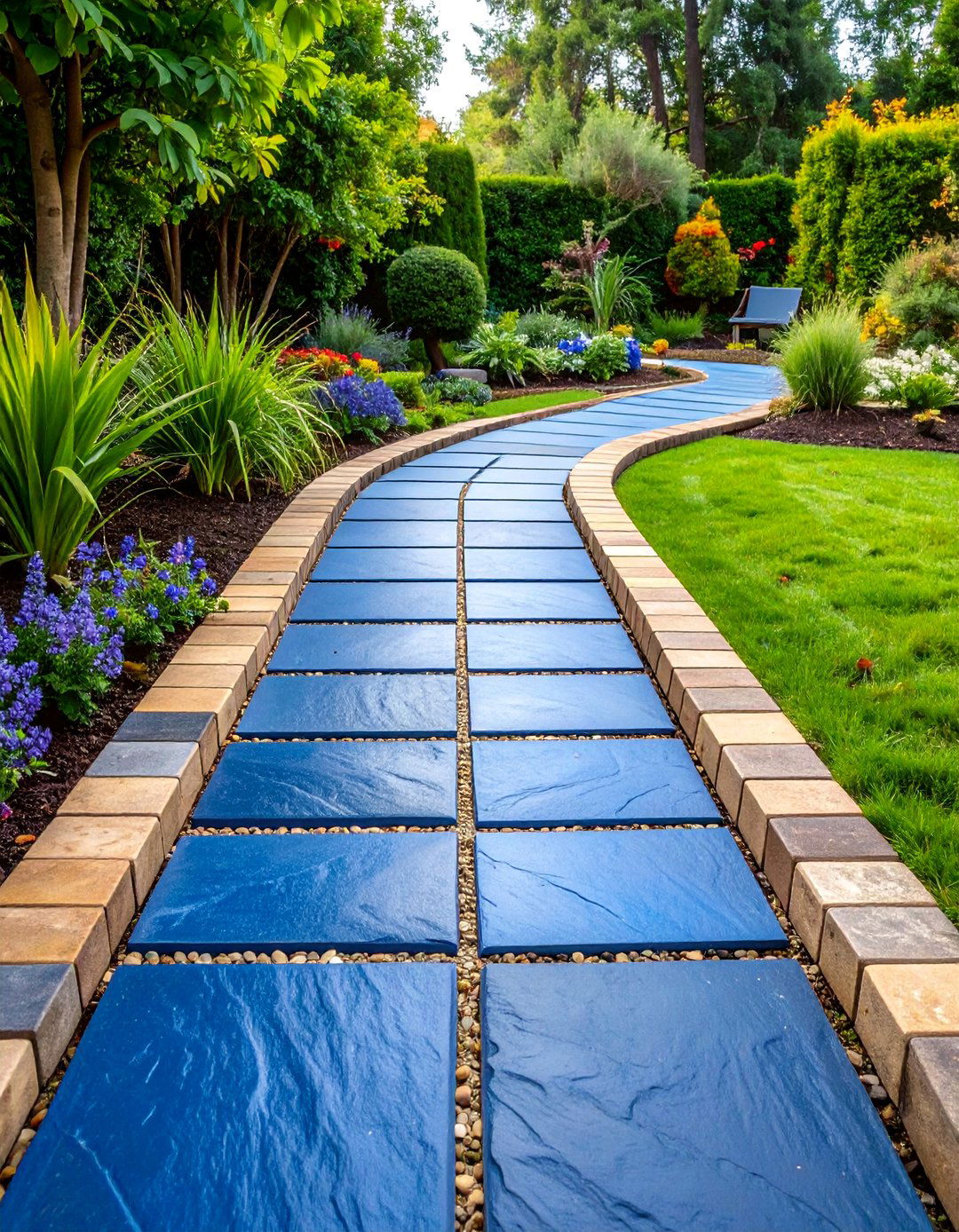
This elegant design combines the sophistication of bluestone with classic brick edging to create a refined, traditional pathway. The bluestone slabs are cut to precise geometric dimensions and arranged in a running bond or ashlar pattern for formal symmetry. Warm-toned brick borders provide striking color contrast against the cool blue-gray stone while defining clear pathway edges. The combination creates visual interest through material contrast while maintaining classical proportions and balanced design. Formal plantings such as boxwood hedges, lavender, or structured perennial borders complement the geometric layout. This style suits traditional homes, formal gardens, or entry pathways where elegant presentation and curb appeal are primary goals.
5. Thermal Finish Bluestone Path with LED Lighting

A sophisticated pathway featuring thermal-finished bluestone provides a smooth, slightly textured surface with enhanced color uniformity perfect for evening illumination. Integrated LED strip lighting runs along pathway edges or between stones, creating dramatic nighttime ambiance while ensuring safety and navigation. The thermal finish intensifies the stone's natural blue tones, creating rich color depth that responds beautifully to artificial lighting. Low-voltage LED fixtures can be recessed into the stone edges or positioned as discrete bollards alongside the path. Smart lighting controls allow for programmable illumination schedules and dimming options. Contemporary landscaping with architectural plants and clean lines complements the high-tech lighting integration, creating a modern outdoor experience that transitions seamlessly from day to night use.
6. Rustic Woodland Bluestone Trail with Gravel Infill

This naturalistic design creates an informal pathway through garden areas using irregularly shaped bluestone pieces with generous gravel-filled joints. The rustic approach celebrates the stone's natural variations in color, texture, and shape rather than imposing geometric constraints. Crushed stone or fine gravel between the bluestone pieces provides excellent drainage while creating a casual, approachable aesthetic. The pathway meanders naturally through existing vegetation, working around mature trees and natural landscape features. Native woodland plants, ferns, and shade-loving perennials create soft borders that blend into surrounding garden areas. This design philosophy emphasizes harmony with existing landscape conditions while providing a functional pathway that feels like a natural part of the environment.
7. Contemporary Wide Bluestone Walkway with Minimalist Design
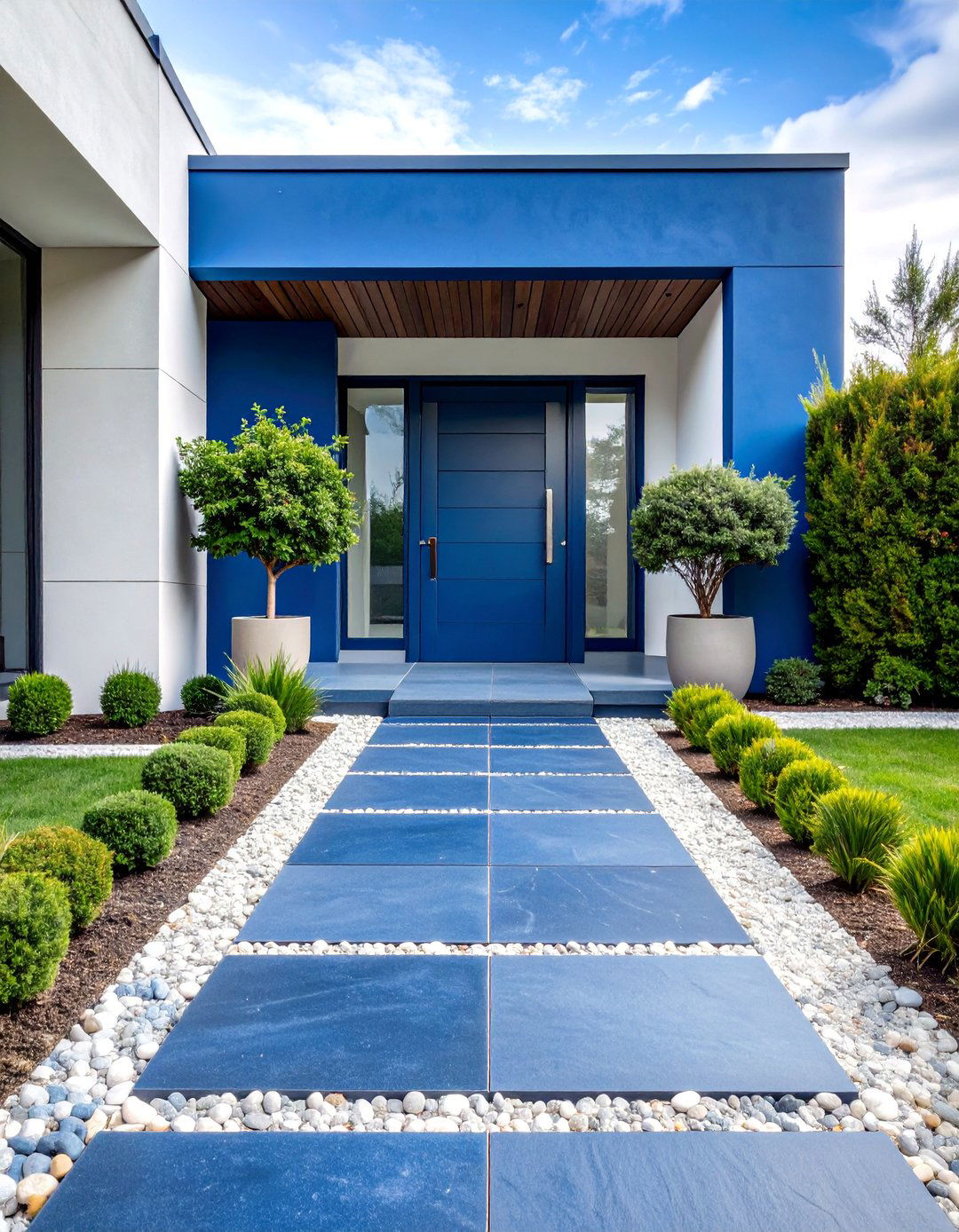
A generous pathway width using large-format bluestone slabs creates a bold, modern statement suitable for high-traffic areas and grand entrances. The wide design accommodates multiple people walking side-by-side while providing an impressive scale that complements substantial architecture. Precise cutting and installation create minimal joint lines for a clean, unified appearance. Neutral landscaping with structural plants like ornamental grasses, modern conifers, or architectural perennials maintains focus on the pathway's dramatic proportions. The broad surface area showcases the natural beauty of bluestone while providing practical functionality for entertaining and daily use. This approach works exceptionally well for contemporary homes, commercial installations, or anywhere that bold architectural statements are appropriate.
8. Bluestone Walkway with Integrated Water Features

This unique design incorporates small water elements directly into the pathway structure, creating sensory interest and cooling effects during warm weather. Narrow channels or discrete fountains interrupt the bluestone surface at strategic intervals, providing the soothing sound of flowing water. The water features can include simple linear channels, small bubbling fountains, or even shallow reflecting pools integrated between stone sections. Careful engineering ensures proper drainage and circulation while maintaining pathway functionality. Aquatic plants or moisture-loving perennials around water elements create lush micro-environments. This innovative approach transforms a simple walkway into an engaging landscape feature that appeals to multiple senses while providing cooling benefits and unique visual interest throughout the garden.
9. Herringbone Pattern Bluestone Path with Ornamental Grasses
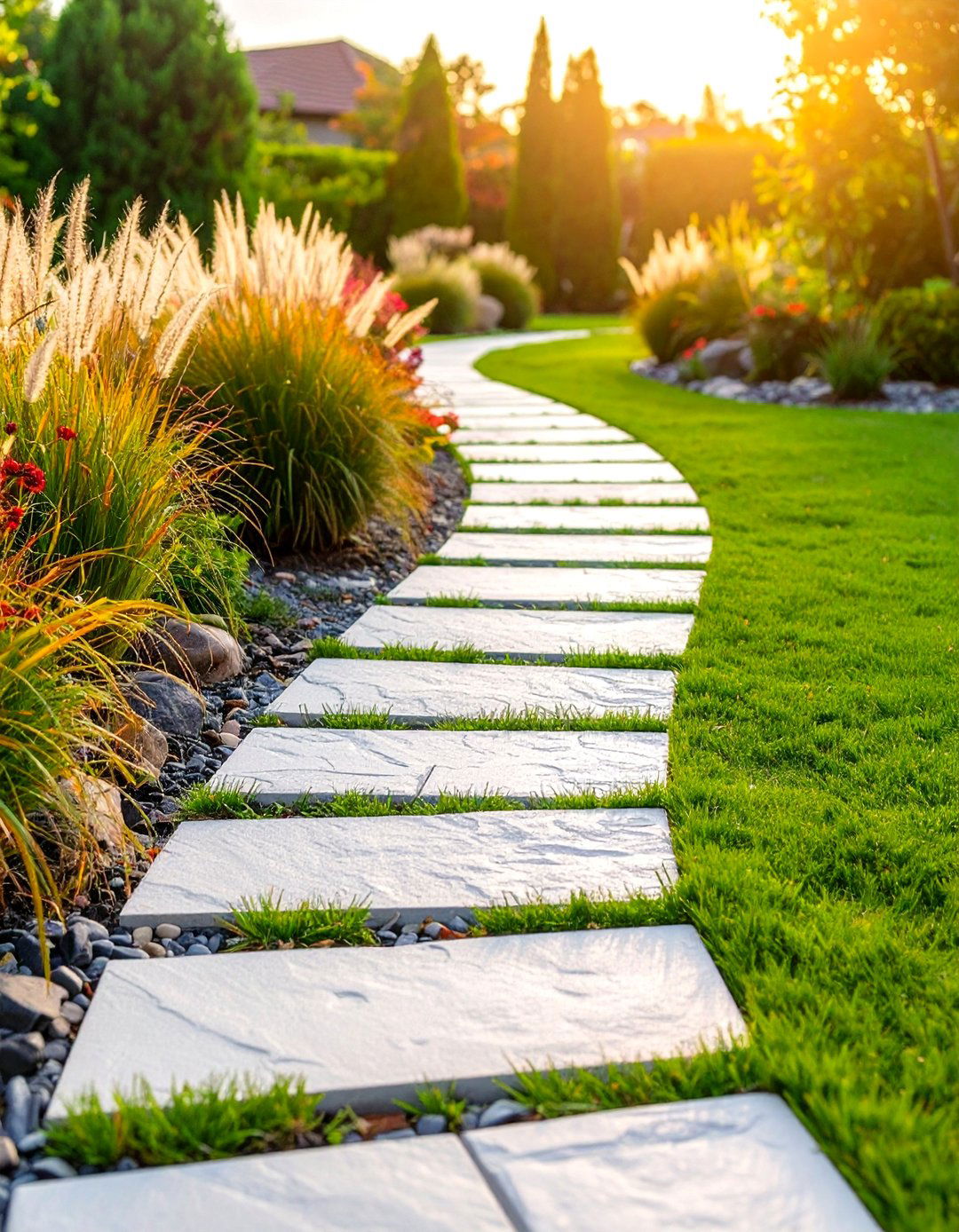
A sophisticated pathway featuring bluestone cut and arranged in a classic herringbone pattern creates dynamic visual movement and traditional elegance. The alternating angles of the herringbone layout add textural interest while maintaining formal structure and organization. Borders of ornamental grasses such as fountain grass, feather reed grass, or Japanese forest grass provide softening contrast to the geometric stone pattern. The grass selection offers seasonal interest through changing colors, textures, and winter structure. Careful plant spacing allows each grass variety to achieve its natural form while creating rhythm along the pathway edges. This design successfully bridges formal and naturalistic approaches, offering sophisticated patterning softened by flowing, organic plant forms.
10. Elevated Bluestone Walkway with Retaining Walls
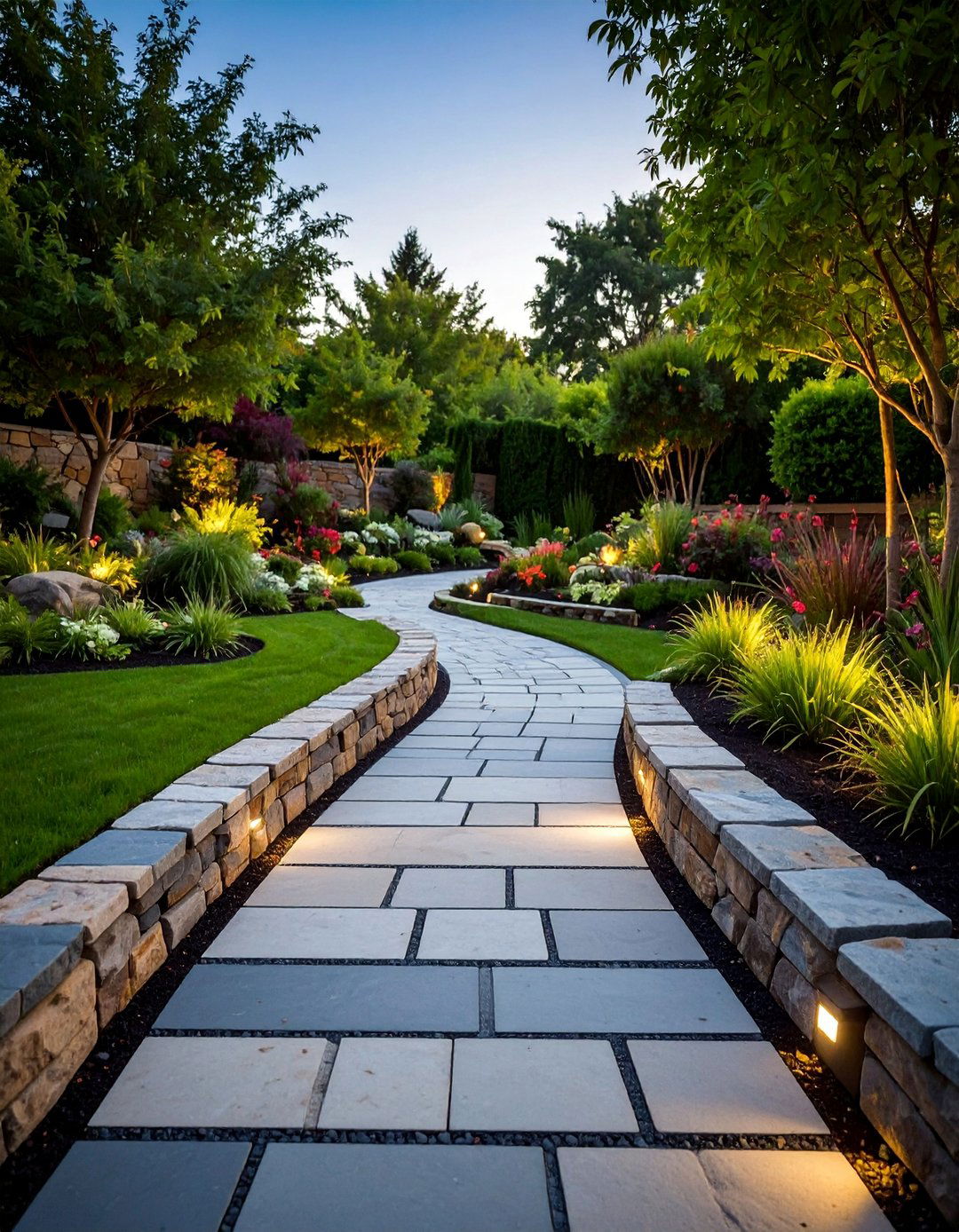
This design solution addresses sloped terrain by creating an elevated pathway supported by coordinating stone retaining walls. The elevated walkway provides level walking surfaces while the retaining walls manage grade changes and prevent erosion. Matching or complementary stone materials create visual continuity between the pathway and support structures. Terraced planting areas between retaining wall levels allow for diverse plant communities and seasonal interest. Integrated lighting in the retaining walls illuminates both the pathway and plantings for evening safety and ambiance. This approach transforms challenging topography into an attractive landscape feature while providing accessible pathway connections between different garden levels. The elevated perspective offers enhanced views of surrounding landscape areas.
11. Bluestone Stepping Stone Garden Path with Groundcover

Large bluestone stepping stones placed strategically through planted areas create an informal pathway that minimizes impact on garden beds while providing access for maintenance and enjoyment. The generous stone sizes ensure stable footing while allowing maximum space for plant growth between stepping points. Low-growing groundcovers such as creeping phlox, ajuga, or sedums fill the spaces between stones, creating a living carpet that changes seasonally. The groundcover selection should complement the garden's existing plant palette while tolerating occasional foot traffic. This design approach allows for intimate garden experiences while preserving the integrity of planted areas. The stepping stone format provides flexibility in pathway routing and can easily accommodate future garden changes.
12. Mixed Material Bluestone Walkway with Granite Accents

This sophisticated design combines bluestone with contrasting granite elements to create visual interest through material variation and color contrast. Granite strips, borders, or accent pieces interrupt the bluestone surface in planned intervals, creating rhythm and preventing monotony in longer pathways. The darker granite provides striking contrast against bluestone's cooler tones while offering similar durability and weather resistance. Mixed material patterns can include geometric inserts, border strips, or alternating sections of each material. Coordinated landscaping using plants that complement both stone colors creates cohesive design integration. This approach allows for creative expression while maintaining the practical benefits of natural stone materials. The material contrast adds sophistication and custom character to standard pathway designs.
13. Serpentine Bluestone Path with Fragrant Border Plants

A gently winding pathway creates graceful curves that invite exploration while connecting different garden areas with natural flow and movement. The serpentine layout follows landscape contours and existing features rather than imposing arbitrary geometry on the space. Fragrant border plantings including herbs, scented perennials, and aromatic shrubs release pleasant fragrances when brushed against or crushed underfoot. Plant selections might include lavender, rosemary, mint family plants, or flowering shrubs chosen for seasonal fragrance. The curving pathway creates intimate garden experiences while the fragrant borders engage multiple senses during garden visits. This design approach emphasizes the journey through the garden rather than simply connecting destinations, encouraging slower movement and greater appreciation of plantings.
14. Bluestone Walkway with Recessed Solar Lighting
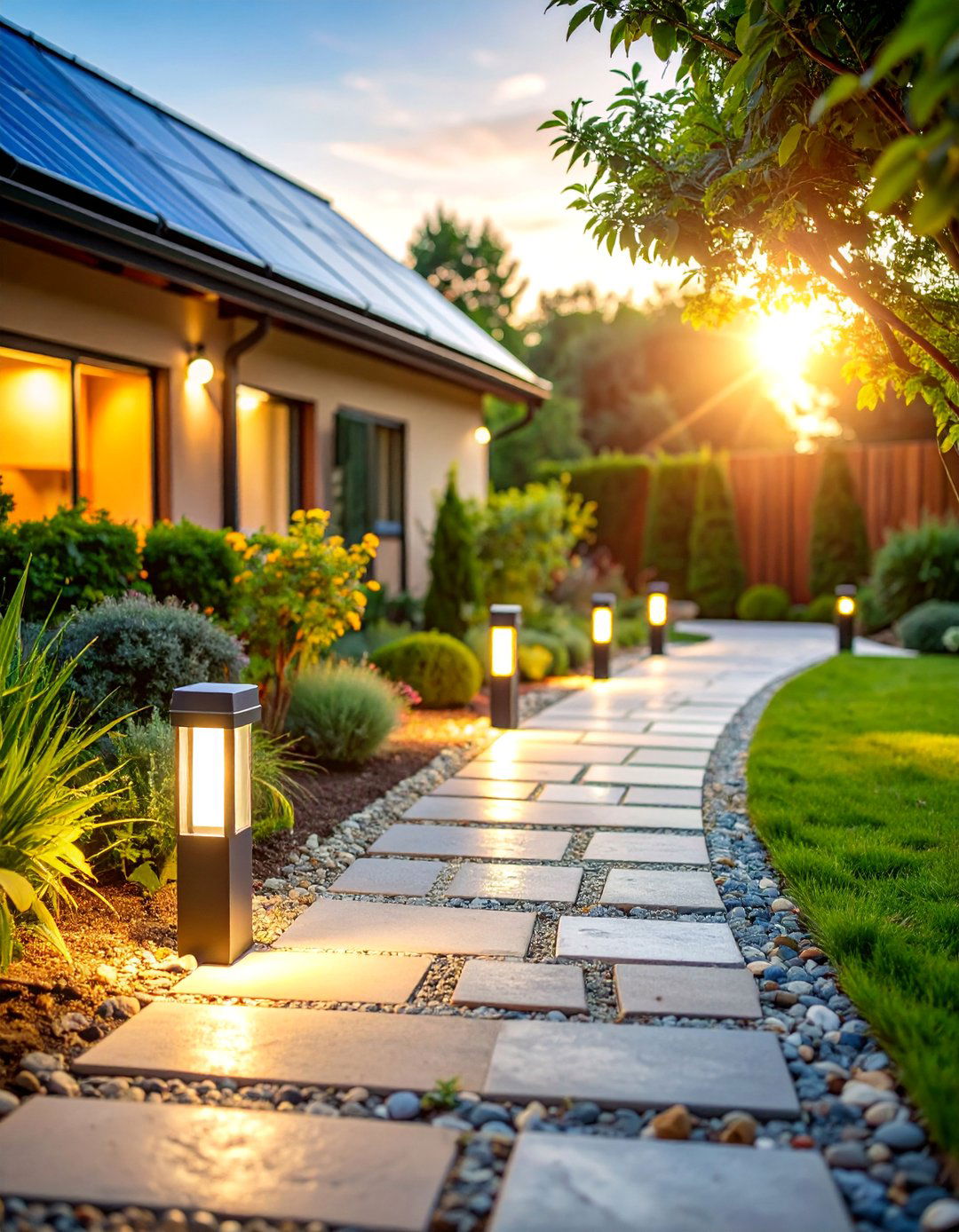
An environmentally conscious design incorporates solar-powered LED lights recessed directly into the bluestone surface or edges for sustainable pathway illumination. The solar fixtures charge during daylight hours and automatically activate at dusk, providing reliable lighting without electrical infrastructure. Recessed installation maintains clean pathway aesthetics while ensuring lights remain protected from damage and weather. Strategic light placement creates pools of illumination that guide navigation while highlighting pathway edges and direction changes. Contemporary plant selections with interesting forms and textures look dramatic under artificial lighting, creating nighttime garden interest. This approach combines practical lighting needs with environmental responsibility while maintaining sophisticated design aesthetics. The solar technology eliminates ongoing electrical costs and complicated installation requirements.
15. Traditional Pennsylvania Bluestone Path with Colonial Style
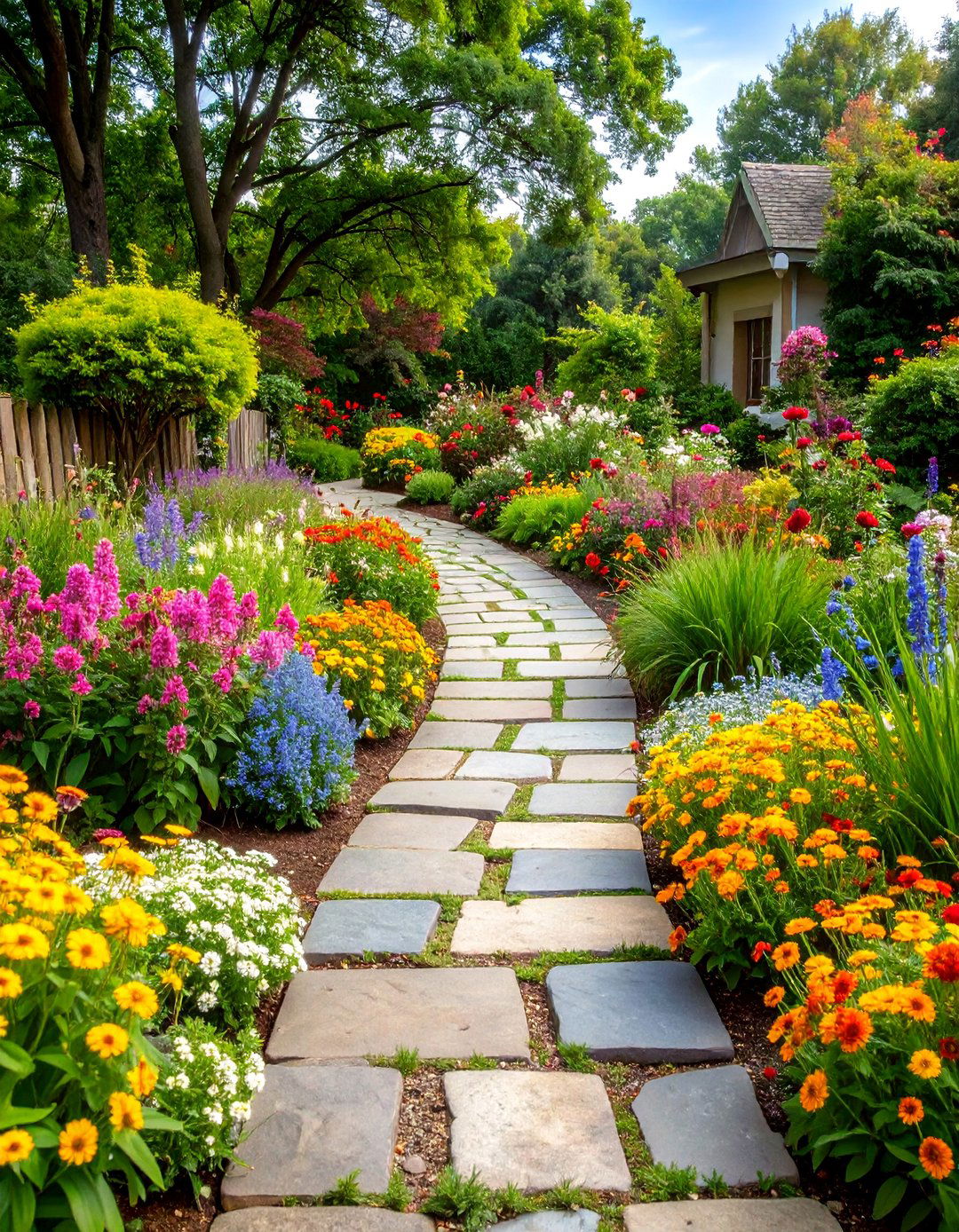
This historically inspired design uses authentic Pennsylvania bluestone arranged in traditional patterns that complement colonial and early American architecture. Natural cleft surfaces showcase the stone's authentic character while providing slip-resistant footing through all seasons. Classic laying patterns such as random rectangular or coursed ashlar reflect historical masonry traditions. Period-appropriate plantings including boxwood, native perennials, and traditional herbs create authentic landscape contexts. The design emphasizes craftsmanship and time-tested materials that age gracefully while requiring minimal maintenance. Subtle color variations within the bluestone create visual interest without overwhelming traditional architectural details. This approach honors regional building traditions while providing modern functionality and durability for contemporary lifestyles seeking historical authenticity.
16. Modern Bluestone Walkway with Architectural Plantings

A minimalist pathway design emphasizes clean lines and geometric precision complemented by carefully selected architectural plants that enhance rather than compete with the stonework. Large-format bluestone slabs create uninterrupted surfaces with minimal joint lines for maximum visual impact. Plant selections focus on structural forms, interesting textures, and year-round presence rather than seasonal flowers. Architectural plants might include modern conifers, ornamental grasses with strong vertical forms, or perennials with bold foliage characteristics. Restrained color palettes in both plants and hardscape materials create sophisticated, gallery-like outdoor experiences. This design philosophy treats the garden as outdoor architecture where each element contributes to an overall composed aesthetic. The result creates timeless outdoor spaces that complement contemporary living.
17. Bluestone Path with Decorative Pebble Borders
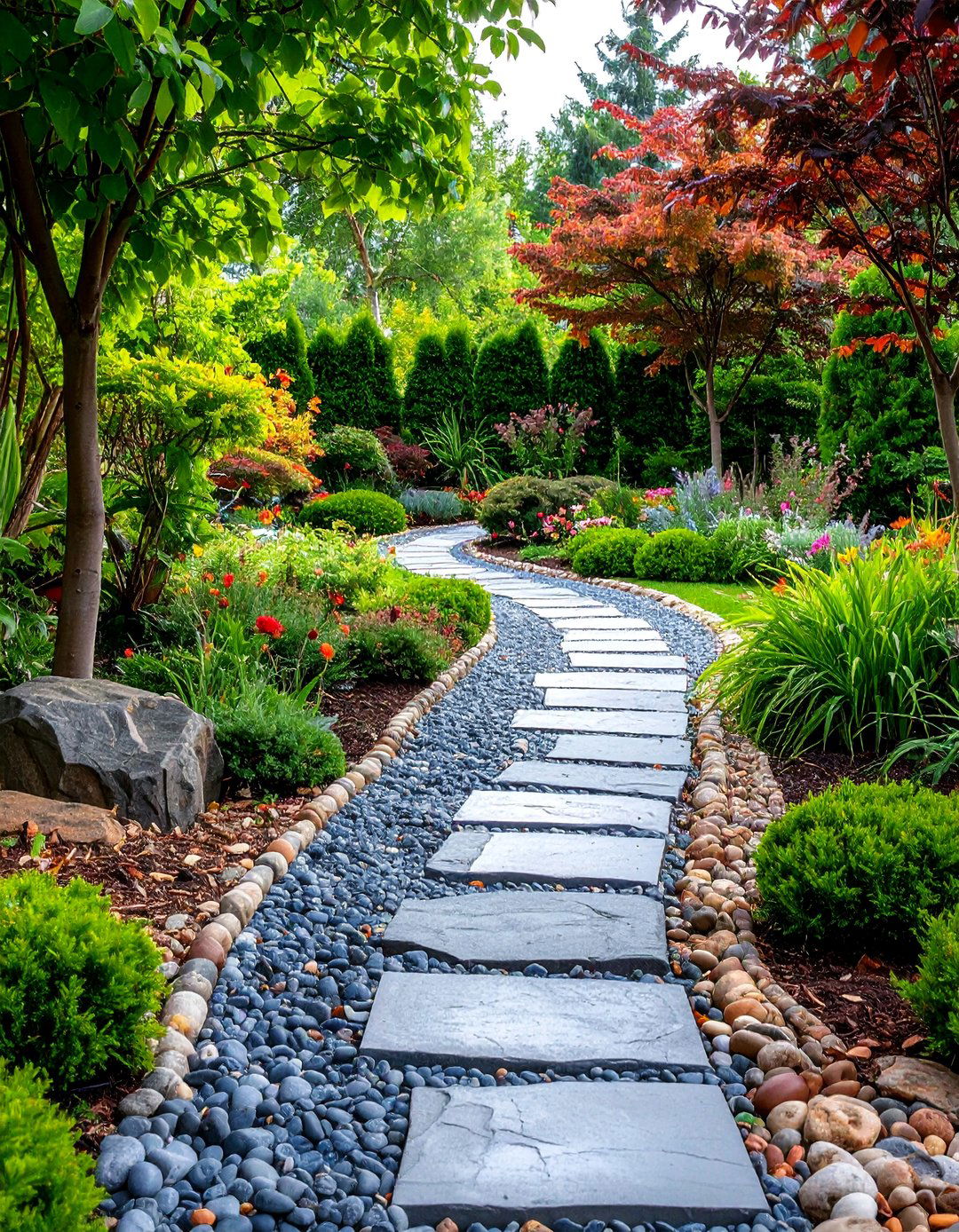
This design enhances bluestone pathways with carefully selected decorative pebbles that provide textural contrast and visual interest along pathway edges. The pebble borders define pathway boundaries while creating transition zones between hard surfaces and planted areas. Pebble selections might include smooth river rocks, crushed granite, or colored stone chips chosen to complement the bluestone's natural tones. Proper edging prevents pebble migration while maintaining clean lines and easy maintenance. The pebble borders provide excellent drainage around the pathway while adding subtle color and texture variations. Different pebble sizes and colors can create patterns or simply provide neutral backgrounds for seasonal plantings. This approach adds refinement and detail to basic pathway designs while remaining cost-effective and easy to maintain.
18. Irregular Bluestone Walkway with Natural Stone Edging
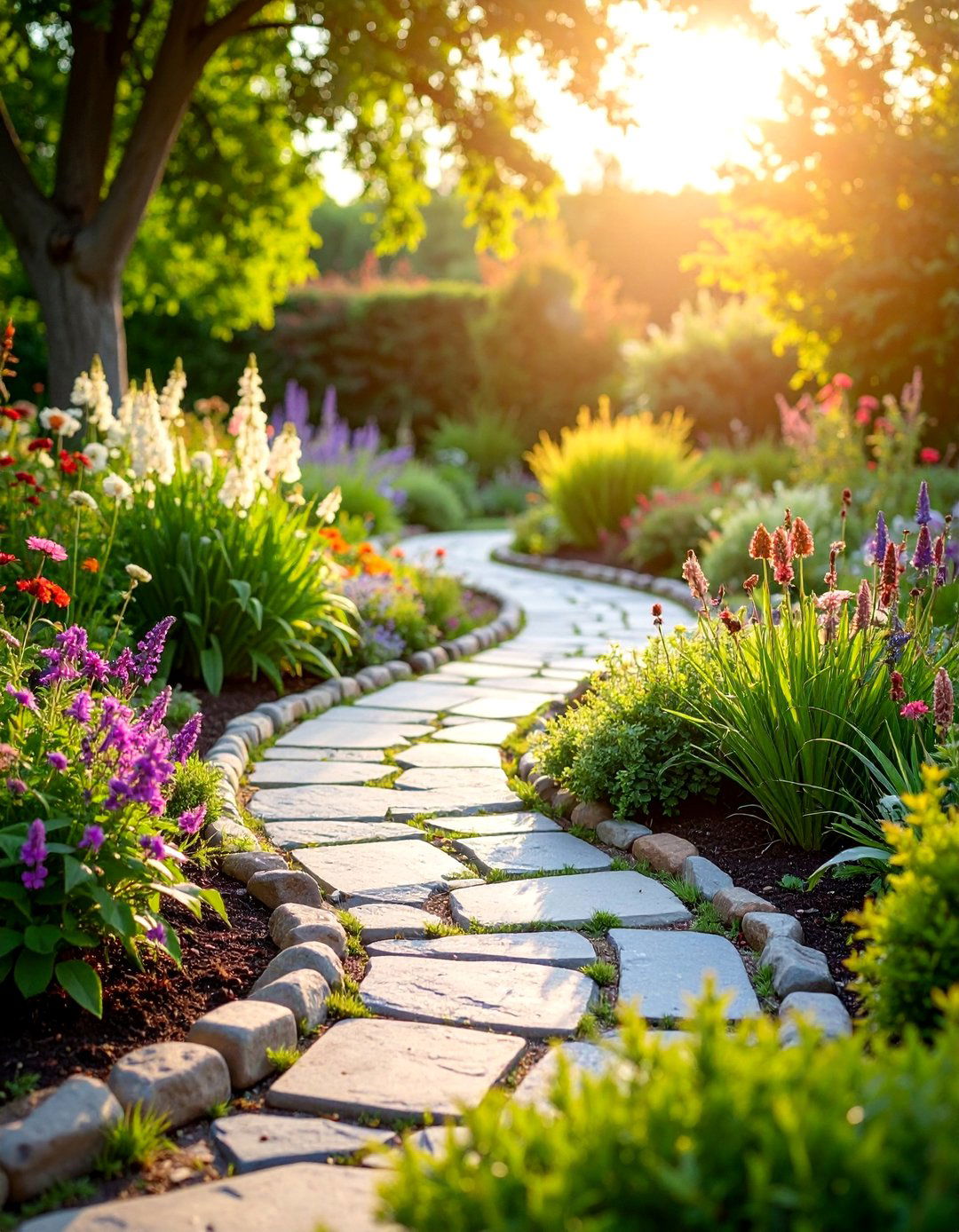
A relaxed pathway design uses naturally shaped bluestone pieces arranged in organic patterns complemented by fieldstone or boulder edging that creates rustic charm. The irregular stone shapes celebrate natural variations while the stone edging provides subtle definition without formal rigidity. Native stone materials create visual harmony while supporting informal planting schemes that include native perennials, grasses, and seasonal wildflowers. The natural approach works with existing landscape conditions rather than imposing artificial geometry or materials. Moss and small plants are encouraged to grow between stones, creating a weathered, established appearance over time. This design philosophy creates pathways that feel like natural landscape features rather than imposed architectural elements. The result harmonizes with woodland settings, cottage gardens, or naturalistic landscapes.
19. Bluestone Stepping Stones with Lawn Integration
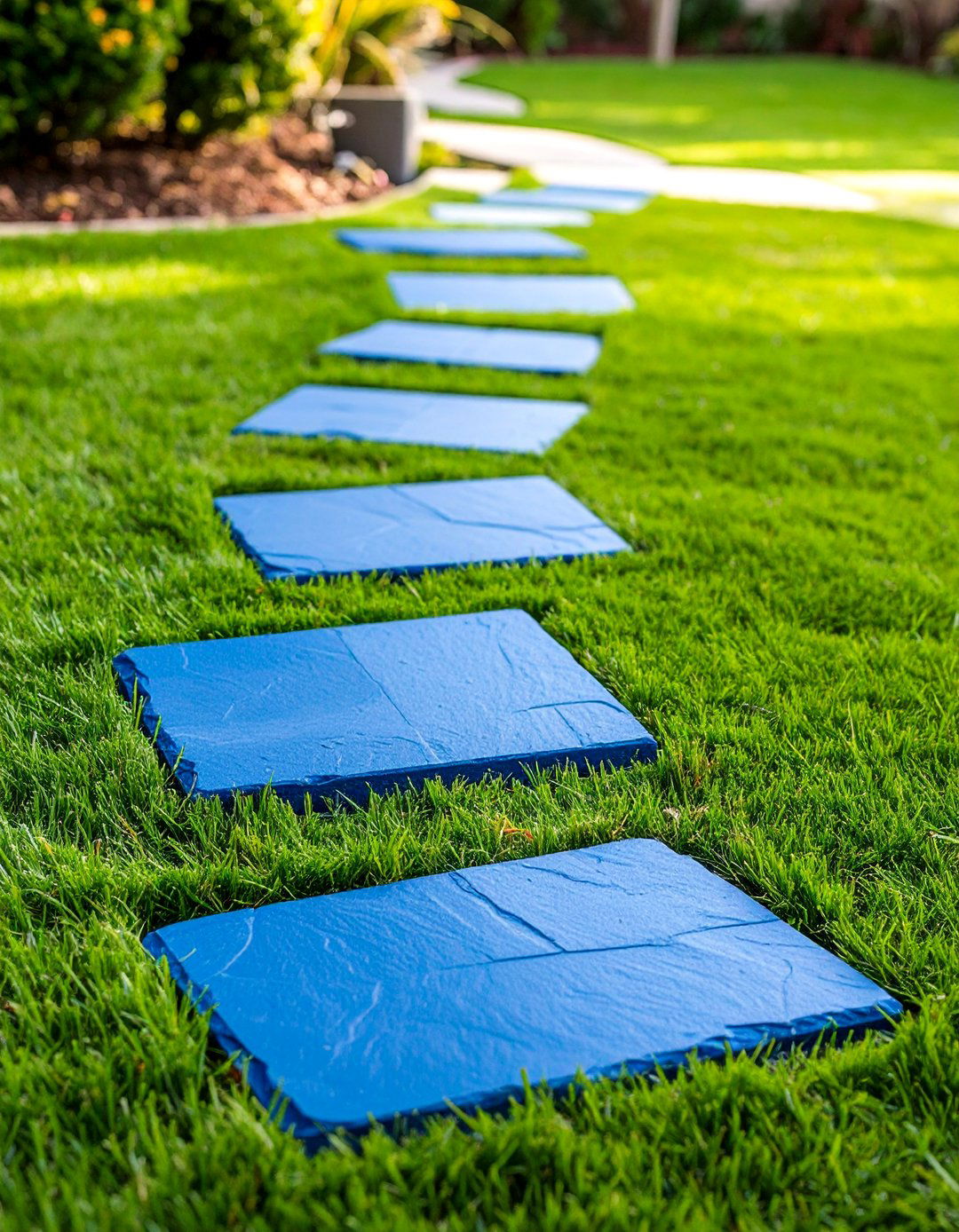
Strategic placement of large bluestone stepping stones through existing or newly planted lawn areas creates functional pathways while maintaining open green space character. The stepping stones provide dry footing during wet conditions while allowing lawn mowers to operate efficiently around and between stones. Stone spacing accommodates comfortable walking stride while ensuring each stone provides stable footing for users of different ages and abilities. The integration preserves lawn areas for recreation and relaxation while providing necessary access routes through garden spaces. Seasonal lawn care can continue normally around the stepping stones, maintaining healthy turf conditions. This approach offers practical pathway solutions without sacrificing valuable open space or requiring extensive landscape reconstruction. The result provides functionality while preserving the spacious feeling of lawn areas.
20. Formal Entry Bluestone Walkway with Symmetrical Design

A grand entrance pathway featuring precisely cut bluestone arranged in symmetrical patterns creates impressive approaches to formal homes and public buildings. The symmetrical design emphasizes axial relationships and balanced proportions that complement classical architectural styles. Matching border plantings on both sides of the pathway reinforce the formal symmetry while providing seasonal color and texture. Plant selections might include boxwood hedges, formal perennial borders, or carefully pruned shrubs that maintain consistent appearances throughout growing seasons. The pathway width accommodates multiple people while providing appropriate scale for impressive entrances. Attention to detail in stone cutting, installation, and maintenance ensures lasting beauty and functionality. This design approach creates memorable first impressions while reflecting the dignity and permanence of important architectural settings.
21. Rustic Bluestone Path with Wildflower Meadow Borders
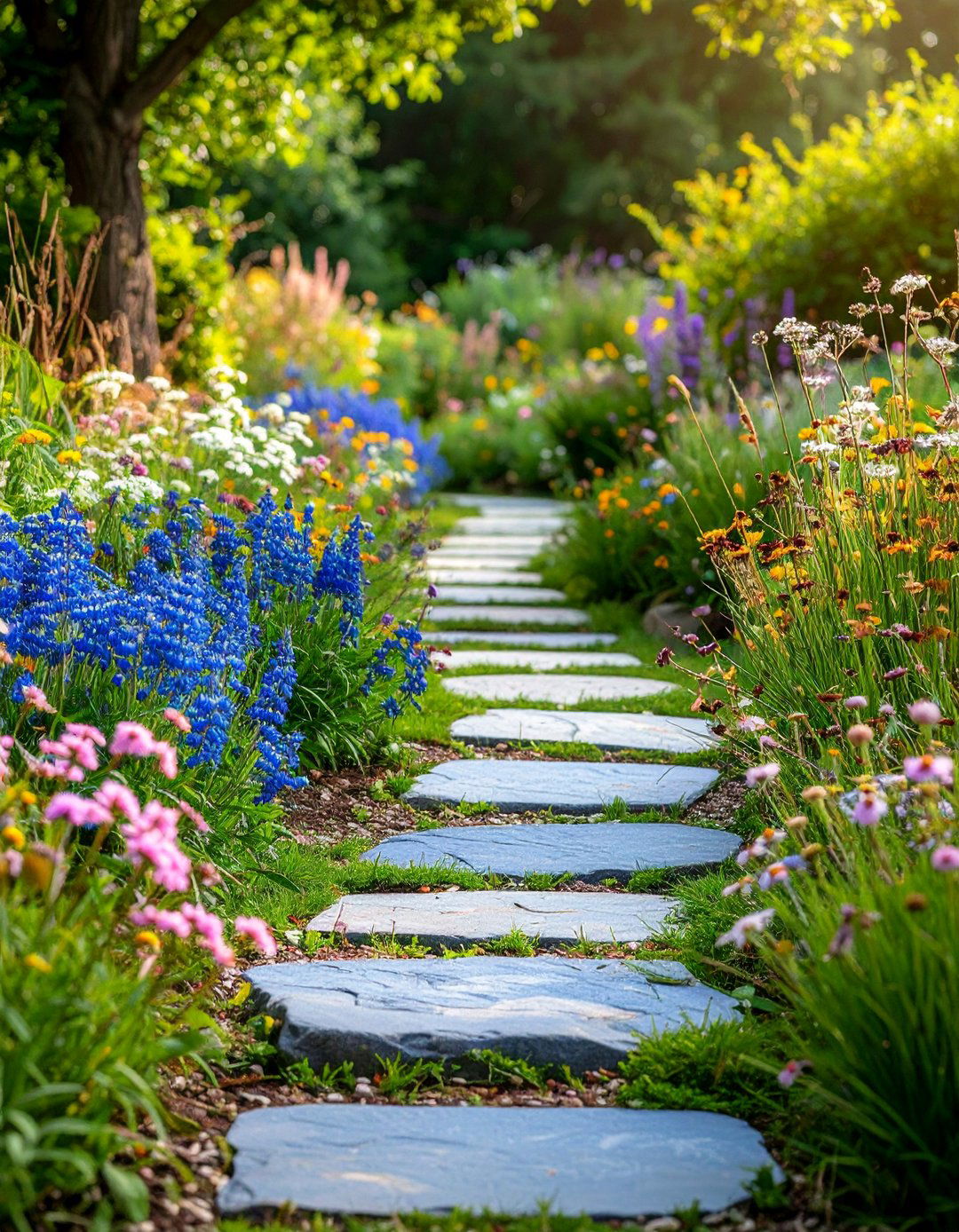
An informal pathway through naturalistic wildflower meadows creates seasonally changing experiences while providing access through planted areas. The rustic bluestone installation celebrates natural stone variations and organic placement rather than rigid geometric arrangements. Native wildflower borders provide habitat for beneficial insects and birds while creating seasonal displays of color and texture. The meadow plantings require minimal maintenance once established, making this approach environmentally sustainable and cost-effective long-term. Pathway placement considers natural drainage patterns and existing vegetation while providing necessary access for garden maintenance and enjoyment. The design changes dramatically throughout growing seasons as different wildflowers bloom and fade, ensuring year-round interest and discovery. This approach creates habitat while providing functional access through naturalistic planted areas.
22. Contemporary Bluestone Walkway with Modern Sculptures
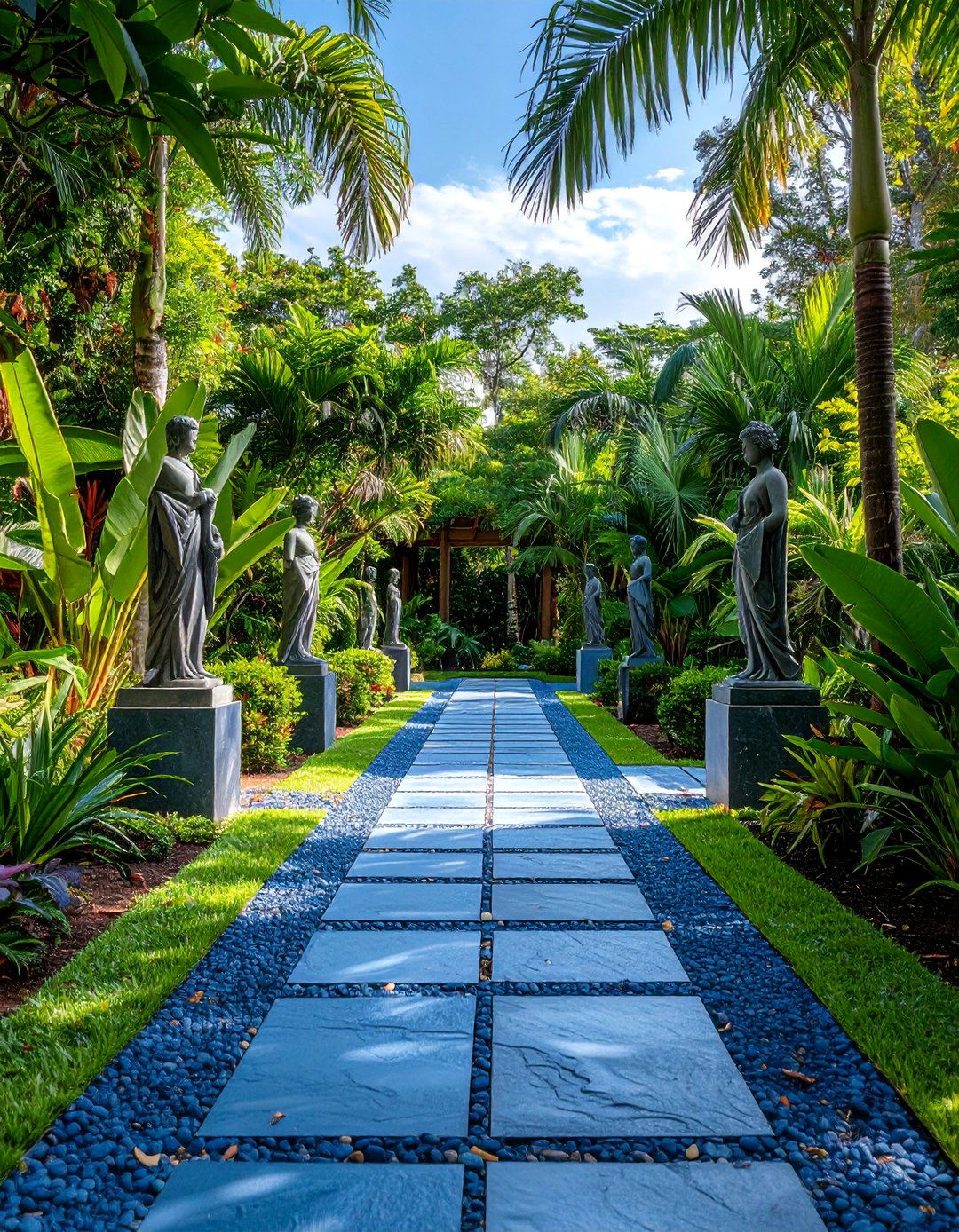
An artistic pathway design incorporates contemporary sculpture or art installations as focal points along the bluestone route, creating gallery-like outdoor experiences. The pathway provides appropriate settings for displaying art while connecting different garden areas or architectural features. Sculpture placement considers viewing angles, lighting conditions, and seasonal plant changes that might affect artwork visibility. The bluestone provides neutral backgrounds that allow artwork to remain the primary focus while ensuring stable, level surfaces for art installation. Contemporary plantings with architectural forms complement both the stonework and displayed art without overwhelming either element. Lighting design ensures artwork remains visible and attractive during evening hours while maintaining pathway safety. This approach transforms functional pathways into cultural experiences that combine landscape design with artistic expression.
23. Bluestone Garden Path with Seasonal Color Plantings
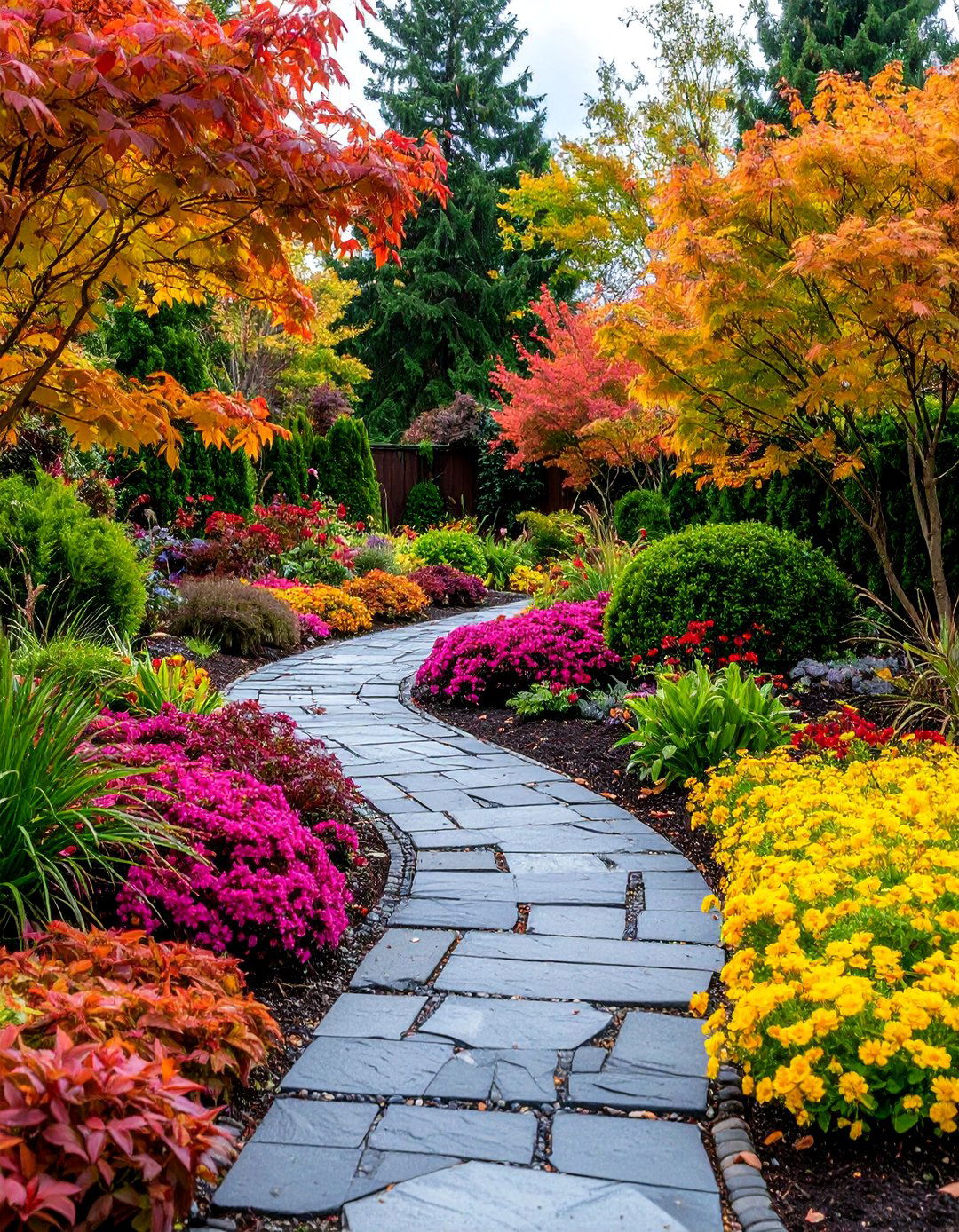
A thoughtfully planned pathway features coordinated seasonal plantings that provide changing color displays throughout the growing year, ensuring continuous interest and beauty. The bluestone provides stable, neutral surfaces that showcase seasonal plant displays without competing for attention. Plant selections include spring bulbs, summer perennials, fall foliage plants, and winter interest shrubs that create year-round garden appeal. Careful timing ensures smooth transitions between seasonal displays while maintaining pathway accessibility and function. The design considers mature plant sizes and spreading habits to prevent pathway encroachment while maximizing visual impact. Regular maintenance schedules ensure peak appearance during prime growing seasons. This approach creates dynamic garden experiences that reward frequent visits while providing practical pathway functionality throughout all seasons.
24. Curved Bluestone Walkway with Outdoor Lighting Features
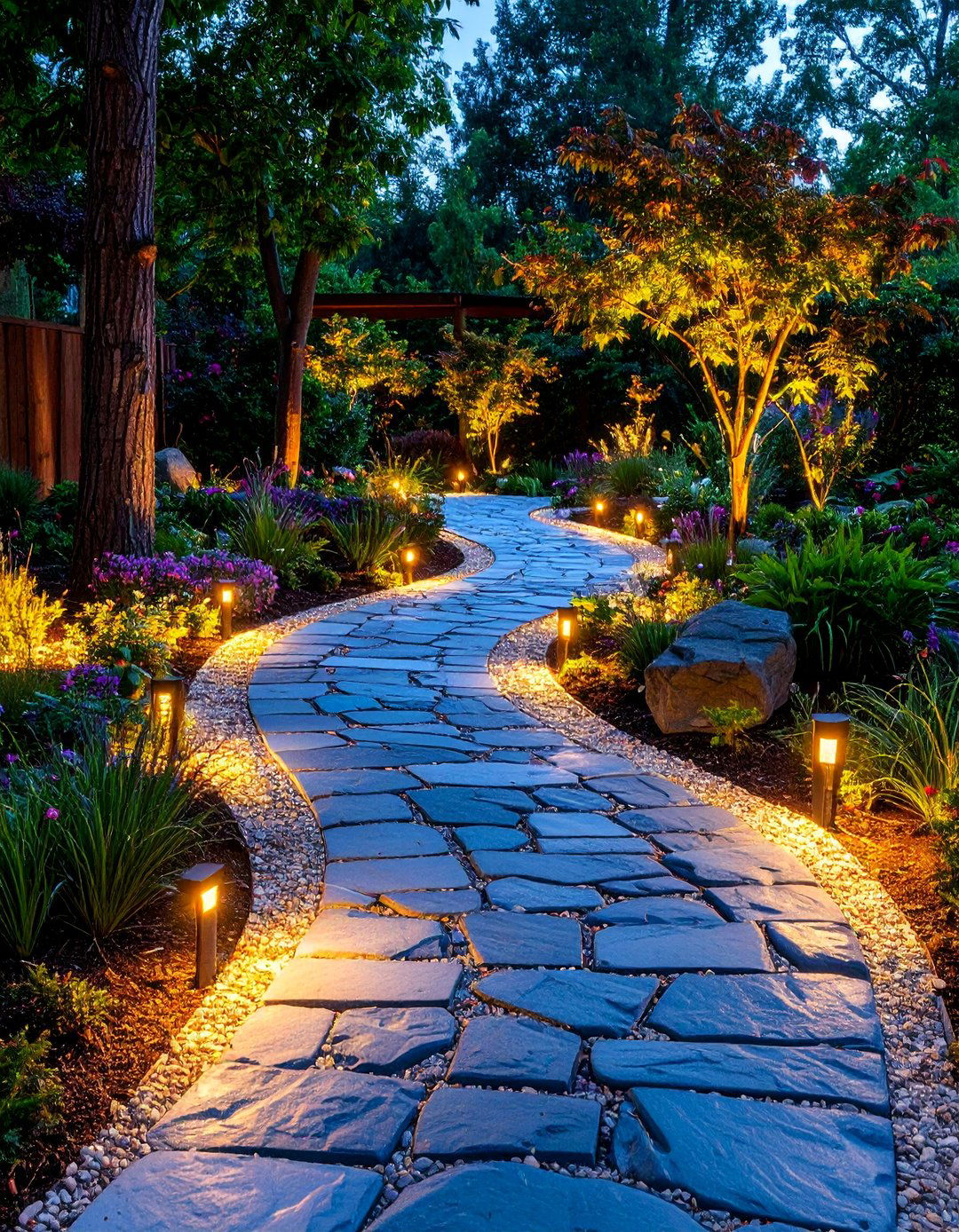
A gracefully curving pathway incorporates sophisticated lighting design that enhances evening use while creating dramatic nighttime ambiance throughout garden areas. The curved layout creates intimate garden experiences while the lighting ensures safe navigation and highlights key landscape features. Lighting options might include discrete uplighting, pathway edge lights, or feature lighting that emphasizes mature trees or architectural elements. The curved pathway creates natural viewing angles for illuminated landscape features while providing comfortable walking experiences. Plant selections consider how they will appear under artificial lighting, choosing varieties with interesting forms, textures, or seasonal characteristics that look attractive when illuminated. Smart lighting controls allow for seasonal adjustments and special occasion programming. This design creates outdoor rooms that function beautifully during both day and evening hours.
25. Multi-Level Bluestone Walkway with Terraced Landscaping

A sophisticated design addresses significant grade changes through terraced bluestone pathways that create level walking surfaces while managing water drainage and erosion control. The multi-level approach provides accessibility while creating opportunities for diverse plant communities adapted to different moisture and sun conditions. Retaining walls between terrace levels provide structural support while creating planting opportunities for cascading plants and seasonal displays. The terraced design allows for creative water management including rain gardens, drainage channels, or water features that enhance both function and beauty. Each terrace level can feature different plant themes or garden purposes while maintaining visual continuity through consistent bluestone materials. This approach transforms challenging slopes into attractive, functional landscape features that provide both practical access and beautiful garden experiences throughout multiple growing zones.
Conclusion:
These diverse bluestone walkway ideas demonstrate the remarkable versatility and enduring appeal of this natural stone material. From formal geometric patterns to rustic naturalistic designs, bluestone adapts beautifully to any landscape style while providing practical durability and timeless beauty. Whether incorporating modern lighting technology, water features, or seasonal plantings, these pathways can transform ordinary outdoor spaces into extraordinary landscape experiences that enhance both property value and daily enjoyment.


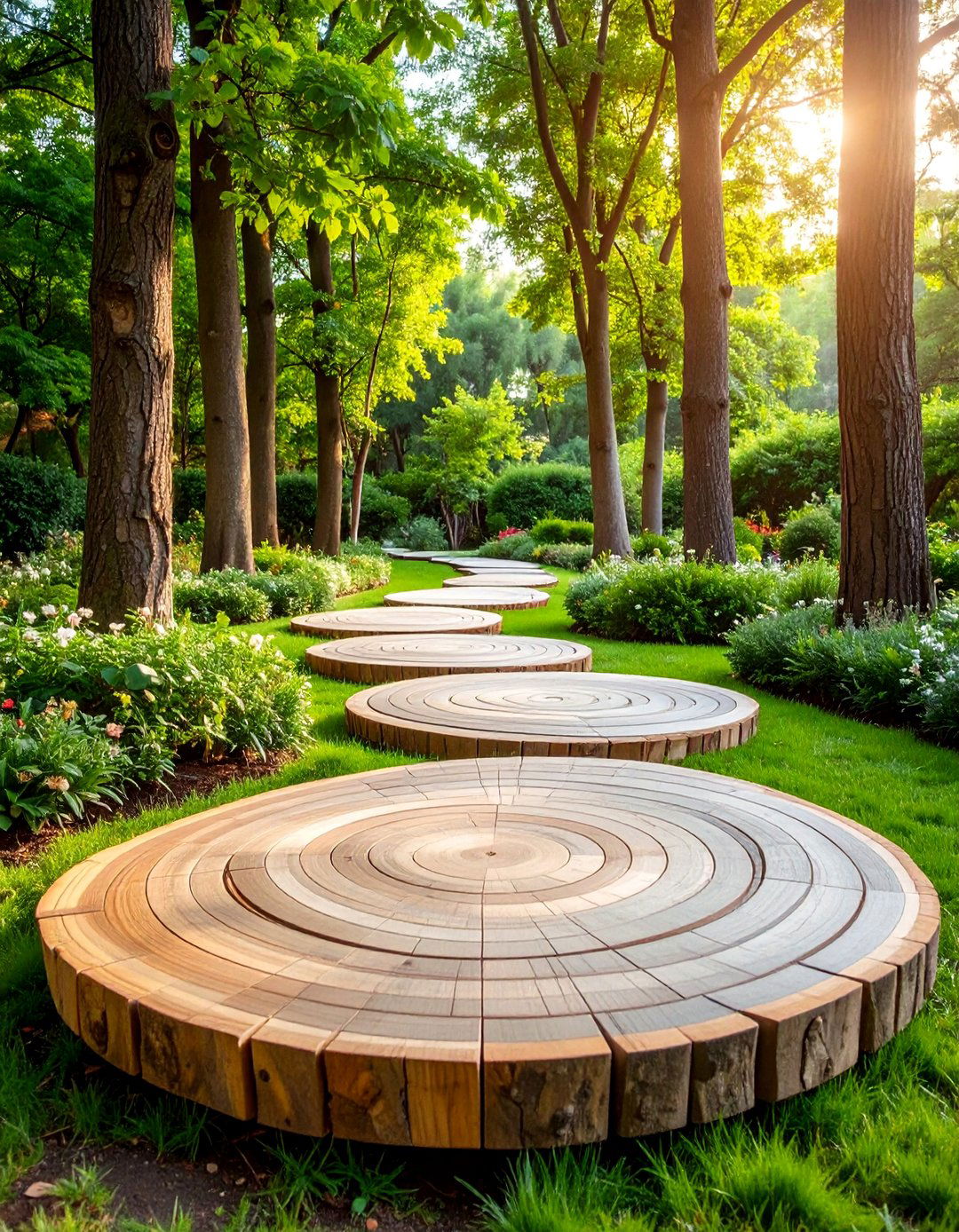


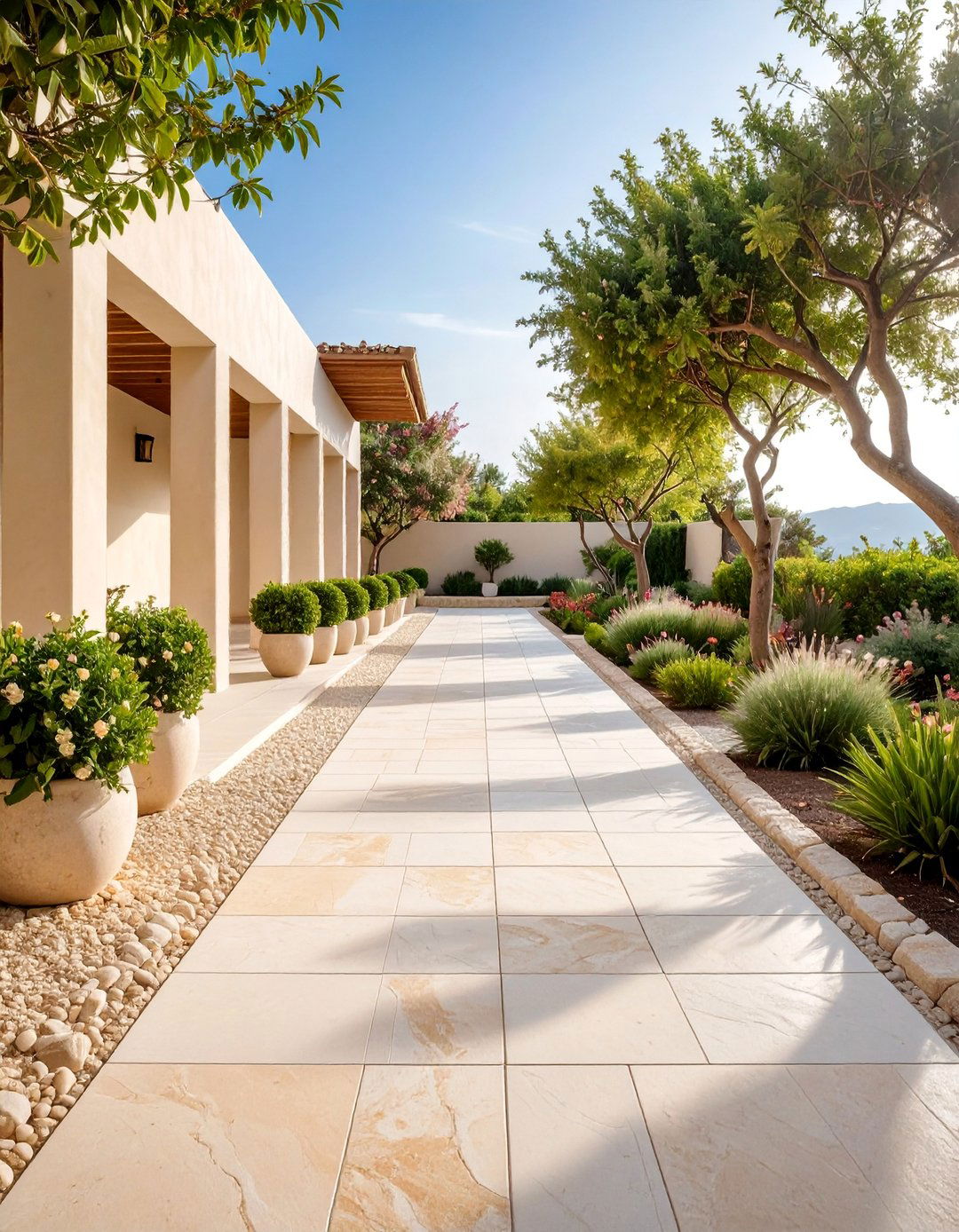

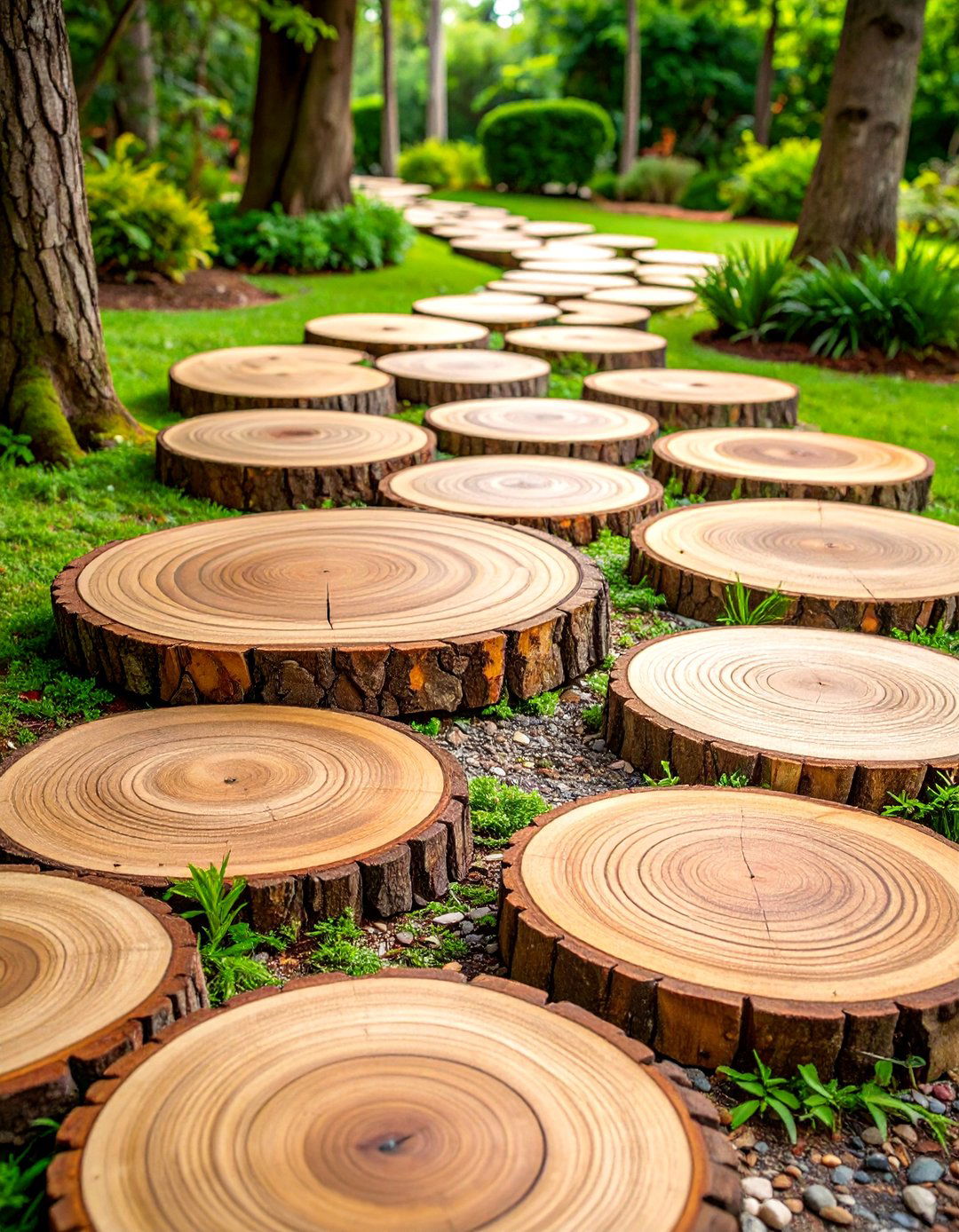


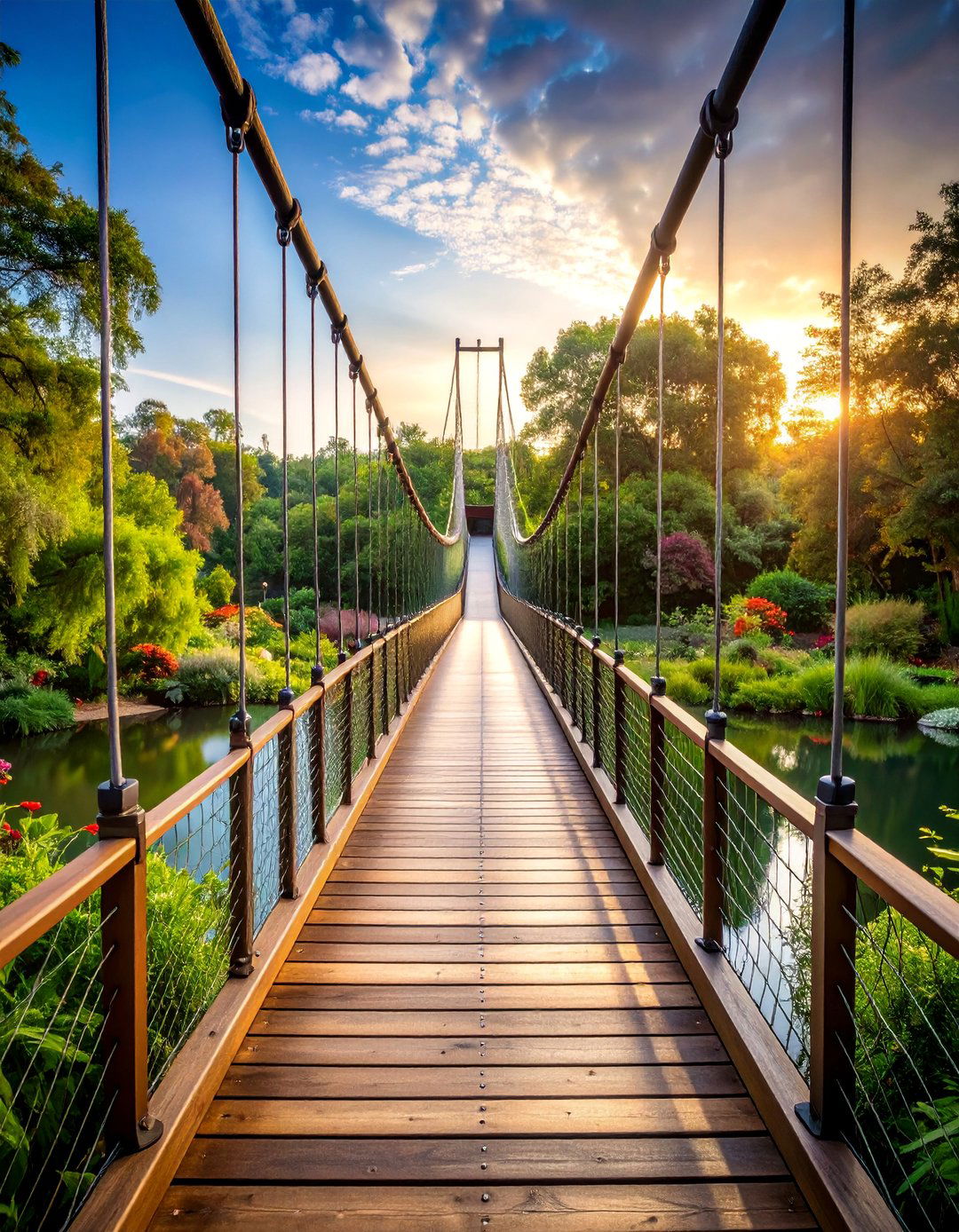


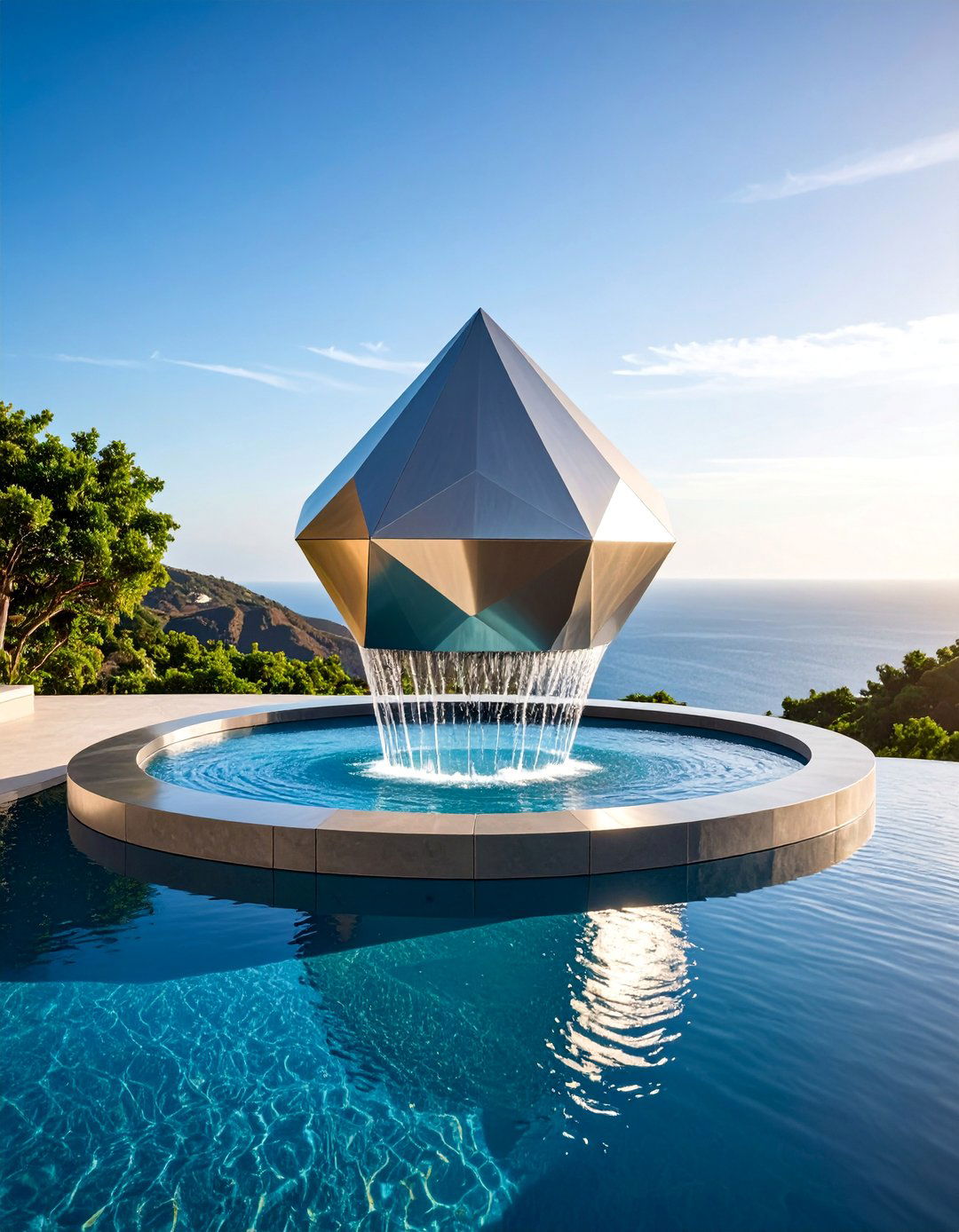


Leave a Reply